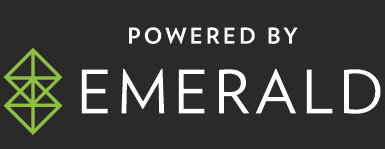By Sarah Robson, Global Head Of Advertising Effectiveness, On Device
I’m a firm believer that marketing is an investment, not a cost. There is a growing consensus on this point of view, and as such, all marketing activity including brand advertising campaigns must be measured accurately so businesses can understand exactly what they are getting in return.
However, the evidence suggests that many brands aren’t getting brand lift measurement right. Flawed methodologies are still commonly used, meaning advertisers can’t be sure how effective their brand campaigns are. For example, there’s a worrying reliance on ad recall – an approach that involves asking consumers if they remember seeing a specific ad.
Using ad recall as a proxy for ad exposure is fundamentally flawed. Recent On Device research, based on an analysis of 2,000 brand lift studies, found that ad recall was inaccurate 80% of the time. The potential for false positives, false negatives and misattributions is considerable, so it’s time for marketers to consign ad recall to the history books and find better ways to gauge the performance of their brand campaigns.
The problem with ad recall in brand lift studies
Brand lift is an important and under-valued campaign metric. It measures the change in attitudes towards a brand as a result of an advertising campaign. It’s measured by creating two groups – one that has been exposed to the ads (the exposed group), and one which hasn’t (the control group). The problem arises when marketers rely on the human memory to create these two groups.
Consumers don’t always remember if they saw an ad; sometimes they may incorrectly recall seeing a campaign or which channel they saw it in, or even mistake one brand’s ad for another. If you use ad recall as a proxy for exposure, this leads to situations where members are assigned to the exposed group when they should be in the control group, and vice versa.
Then there are other reasons to question the reliability of some brand lift studies, especially those run by parties that have a vested interest in reporting positive results, such as platforms or media companies. Opaque methodologies may mislead brands into thinking they are performing better than they really are; without independent verification and a clear understanding of how the results have been reached these studies are worthless.
Platforms and media owners shouldn’t be marking their own homework; these ‘value-added’ brand lift studies can lead marketers down the wrong path, wasting budgets and eroding trust.
Passive exposure: A better approach to brand lift measurement
Rather than using ad recall as a basis for brand lift studies, marketers should be looking for independent, third-party measurement based on passive exposure. Passive exposure involves embedding a 1×1 pixel into the ad creative, which tracks when an ad is served and who it is served to.
This means there’s a high degree of confidence in who has seen the ad and who hasn’t, and accurate exposed and control groups can be built. There’s no room for contamination through human error, so the true impact of a campaign can be correctly assessed.
Using passive exposure techniques also helps to highlight another shortcoming of ad recall methods. On Device’s study found that claimed ad recall for customers of a brand is, on average, 3.1 times higher than that for non-customers, even when ad exposure rates between these two groups are broadly comparable. This means that existing customers are more likely to be in exposed groups than non-customers in ad recall-based surveys, skewing the results.
This highlights just how important it is that marketers understand the methodology they use to measure campaign metrics, and why they shouldn’t trust ‘black-box’ solutions.
Making brand lift measurement work across channels
One of the key reasons that ad recall is still commonly used in brand lift measurement is that it’s easier and more affordable. When budgets are tight, it may seem like an attractive option; but the results will be misleading at best. While passive exposure measurement is more complex – especially across a highly-fragmented media landscape – investing in quality brand lift measurement is the only way to get an accurate picture of campaign effectiveness.
While 50 years ago, linear TV was the best way to reach vast, engaged audiences, today consumers are fragmented across many different channels and devices. Measurement is plagued with silos and inconsistencies with different metrics for different channels, so marketers need to find solutions that offer a more uniform view. Tagged digital measurement methods that work across multiple digital channels – such as the open web, CTV, and audio – provide them with a consistent way of linking ad exposure to outcomes.
Ad recall needs to be erased from marketers’ memories
If a company is continually seeing positive brand lift results, but no visible improvement in business performance, then they’re getting something wrong. Vanity metrics and platform-led studies that only tell you what you want to hear are worthless.
Marketers will see improvements in brand lift if they use methodology that is fully transparent and not susceptible to human error. If they truly want to prove that marketing is an investment, then they need to measure Brand Lift accurately and independently.








